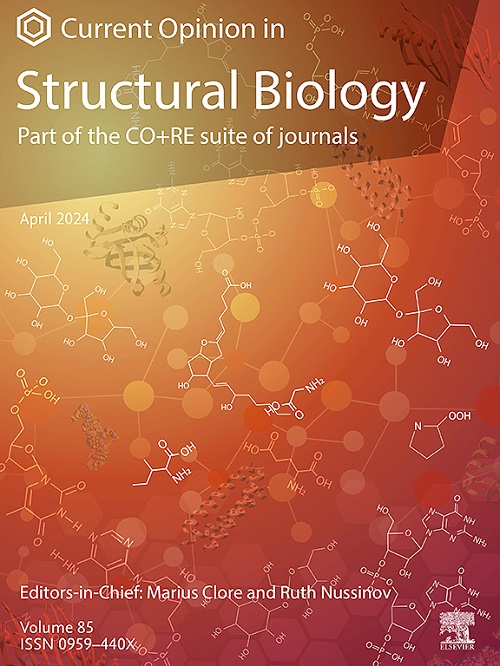RNA ensembles from in vitro to in vivo: Toward predictive models of RNA cellular function
IF 6.1
2区 生物学
Q1 BIOCHEMISTRY & MOLECULAR BIOLOGY
引用次数: 0
Abstract
Deepening our understanding of RNA biology and accelerating development of RNA-based therapeutics go hand-in-hand—both requiring a transition from qualitative descriptions of RNA structure to quantitative models capable of predicting RNA behaviors, and from a static to an ensemble view. Ensembles are determined from their free energy landscapes, which define the relative populations of conformational states and the energetic barriers separating them. Experimental determination of RNA ensembles over the past decade has led to powerful predictive models of RNA behavior in vitro. It has also been shown during this time that the cellular environment redistributes RNA ensembles, changing the abundances of functionally relevant conformers relative to in vitro contexts with subsequent functional RNA consequences. However, recent studies have demonstrated that testing models built from in vitro ensembles with highly quantitative measurements of RNA cellular function, aided by emerging computational methodologies, enables predictive modelling of cellular activity and biological discovery.

从体外到体内的 RNA 组合:建立 RNA 细胞功能预测模型
加深我们对 RNA 生物学的理解和加速开发基于 RNA 的疗法是相辅相成的,两者都需要从 RNA 结构的定性描述过渡到能够预测 RNA 行为的定量模型,并从静态视角过渡到集合视角。组合是根据其自由能谱确定的,自由能谱定义了构象状态的相对数量以及将它们分开的能量障碍。在过去十年中,通过对 RNA 组合的实验测定,建立了强大的体外 RNA 行为预测模型。研究还表明,细胞环境重新分配了 RNA 组合,改变了与体外环境相关的功能构象的丰度,从而对 RNA 的功能产生了影响。然而,最近的研究表明,在新兴计算方法的帮助下,利用对 RNA 细胞功能的高度定量测量来测试根据体外组合建立的模型,可以对细胞活动和生物发现进行预测建模。
本文章由计算机程序翻译,如有差异,请以英文原文为准。
求助全文
约1分钟内获得全文
求助全文
来源期刊

Current opinion in structural biology
生物-生化与分子生物学
CiteScore
12.20
自引率
2.90%
发文量
179
审稿时长
6-12 weeks
期刊介绍:
Current Opinion in Structural Biology (COSB) aims to stimulate scientifically grounded, interdisciplinary, multi-scale debate and exchange of ideas. It contains polished, concise and timely reviews and opinions, with particular emphasis on those articles published in the past two years. In addition to describing recent trends, the authors are encouraged to give their subjective opinion of the topics discussed.
In COSB, we help the reader by providing in a systematic manner:
1. The views of experts on current advances in their field in a clear and readable form.
2. Evaluations of the most interesting papers, annotated by experts, from the great wealth of original publications.
[...]
The subject of Structural Biology is divided into twelve themed sections, each of which is reviewed once a year. Each issue contains two sections, and the amount of space devoted to each section is related to its importance.
-Folding and Binding-
Nucleic acids and their protein complexes-
Macromolecular Machines-
Theory and Simulation-
Sequences and Topology-
New constructs and expression of proteins-
Membranes-
Engineering and Design-
Carbohydrate-protein interactions and glycosylation-
Biophysical and molecular biological methods-
Multi-protein assemblies in signalling-
Catalysis and Regulation
 求助内容:
求助内容: 应助结果提醒方式:
应助结果提醒方式:


